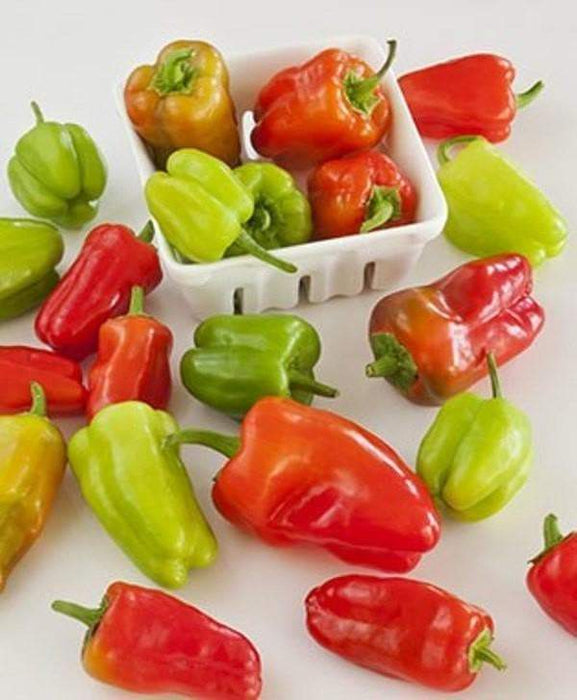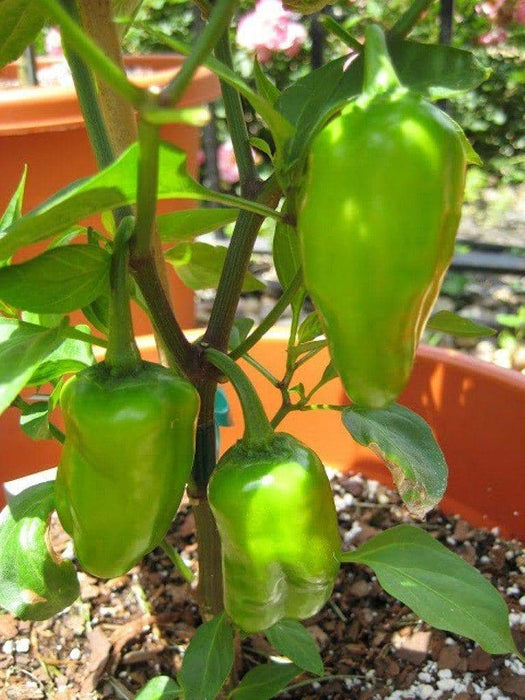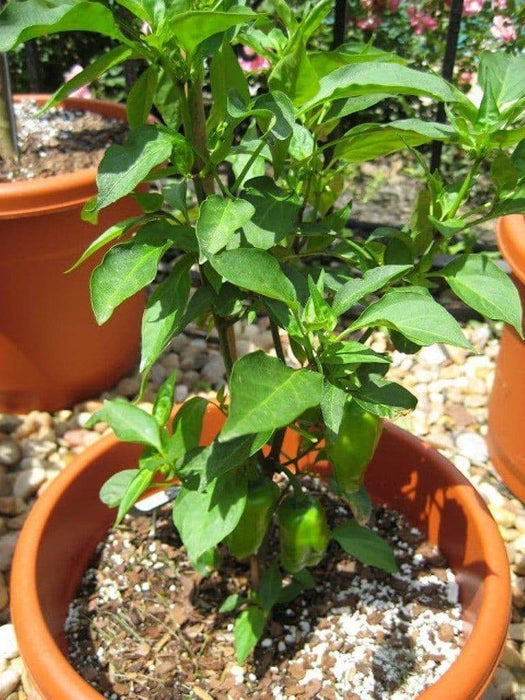
Cajun Belle Pepper Seeds - Capsicum annuum , Mild
Most orders are processed by the next day
Select your desired size and/or color from the available options.
A great small bell pepper that is an All American Selection winner. Cajun Belle True to its name, Cajun Belle pepper is an awesome pepper because it gives you all the flavor of a sweet pepper combined with a mild but spicy heat that adds zip to any dish. This 2010 All America winner is just plain cute, too. We love the way the little peppers ripen from lime green to orange to red. You can eat them at any stage, but the longer they stay on the plant, the warmer they get. Plants are robust and disease tolerant yet relatively small, growing about 2 feet tall by 2 feet wide. They’re ideal for small gardens or containers. Each fruit is 2 to 3 inches long, with 3 to 4 lobes to make a small, thin walled blocky miniature pepper. Allowed to remain on the plant to maturity, they turn glossy red and grow increasingly flavorful. Plants in our Alabama test garden (where the long harvest season lasts from May through October) easily yield more than 150 peppers each. Of course, yield in your garden will depend on care and the length of your warm growing season.
Sow seeds indoors ¼" deep. Peppers germinate best in warm soil, so gentle bottom heat may be helpful until seedlings emerge. Wait to transplant outdoors until soil is warm.
Pepper varieties come from tropical humid regions. The temperature, moisture, and air circulation all play a role in growing plants from seeds. Too little heat, too much moisture, and lack of air circulation will cause poor results. Do not use jiffy peat pots, plugs, or potting soil as the soil becomes too dry or too wet, which can lead to disease and fungus. We have experienced disease and low germination when using these types of products. Use Organic Seed Starting Material for best germination results.
Peppers often like to take their sweet time germinating. They can be up in a week, and some will take almost a month. Even with paper towel germination testing, they can take long. I am not sure why, but it is a normal occurrence. So plan and make sure you start them early enough! Also, remember they like heat to germinate so make sure you have a heating mat or something to keep the soil warm. Placing them up on top of the fridge often works too since it is normally warmer up there.
Growing Peppers:
Peppers, like tomatoes, grow in well-drained fertile soil. Almost all peppers have the same requirements for successful growth. Plant them in good, well-drained, fertile soil â and make sure they get lots of sunlight and a good inch of water per week. In many ways, they mimic the same requirements needed for growing great tomatoes.
At Planting Time:
We plant all of our peppers with a good shovel full of compost in the planting hole, and then give them a good dose of compost tea every few weeks for the first 6 weeks of growth. We also mulch around each of our pepper plants with a good 1 to 2â³ thick layer of compost.
Growing Hot Peppers in Containers
Peppers can be grown all year long in containers. It is suitable for apartment dwellers and gardeners who live in cool regions where the number of growing days are limited. Many pepper enthusiast grow peppers in pots so they can have fresh peppers all year long. Itâs best to use 5 gallon containers so the roots do not get too over-crowded
Soil Requirements:
Requires fertile soil in a well drained location in the garden. Apply much and grass clippings, or straw around base of plant.
Water Requirements:
Water well with soaker hoses during dry and hot spells.
Fertilizer Requirements:
Use RootBlast, Vegetable Alive, and Slow Release Organic Fertilizer when transplanting outdoors.
Harvest Tips:
Harvest sweet peppers when they are green or fully mature using garden scissors so you don't
damage the plant. Pick peppers as they mature to encourage new buds to form.
Seed Collecting:
HARVEST: For seeds, harvest fully-ripe, mature peppers.
Note: If, before peppers mature, frost threatens, pull entire plant then hang in a cool, dry place until peppers mature.
PROCESS: Dry or wet method. Dry method is a good choice for harvesting small amts of seeds. Cut bottoms off fruit then reach inside to remove seeds. Wet method is a good choice if you have large amts of peppers. Cut off tops of peppers, under stem. Place peppers in blender, add
water then gently blend until good seeds sink to bottom of blender. Discard floating seeds and pepper debris. Spread good seeds on paper towels then dry in a cool spot.
LET OUR CUSTOMER SPEAK FOR US

![[Seeds] - Caribbeangardenseed](http://caribbeangardenseed.com/cdn/shop/files/gift-card-gift-card-1_1024x1024_dfa857db-9150-4315-a362-7f0bb3fb9c47_60x28.png?v=1703978838)


